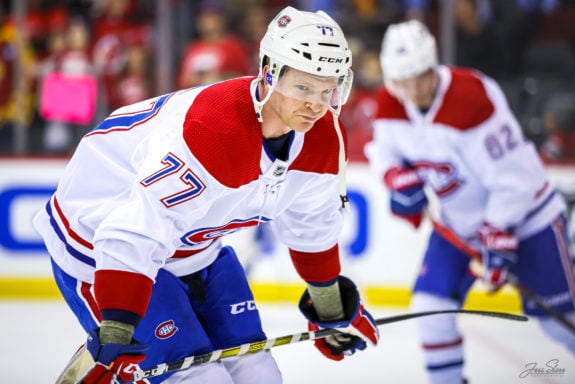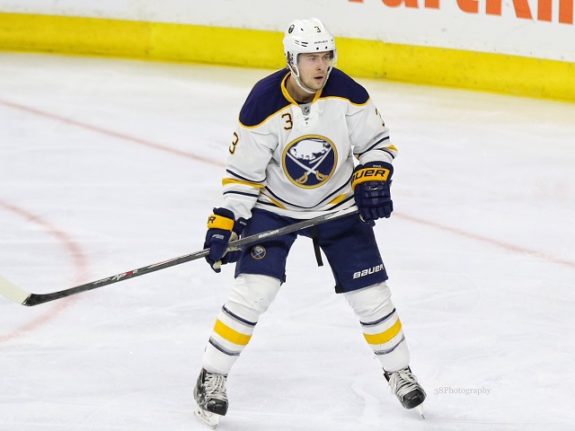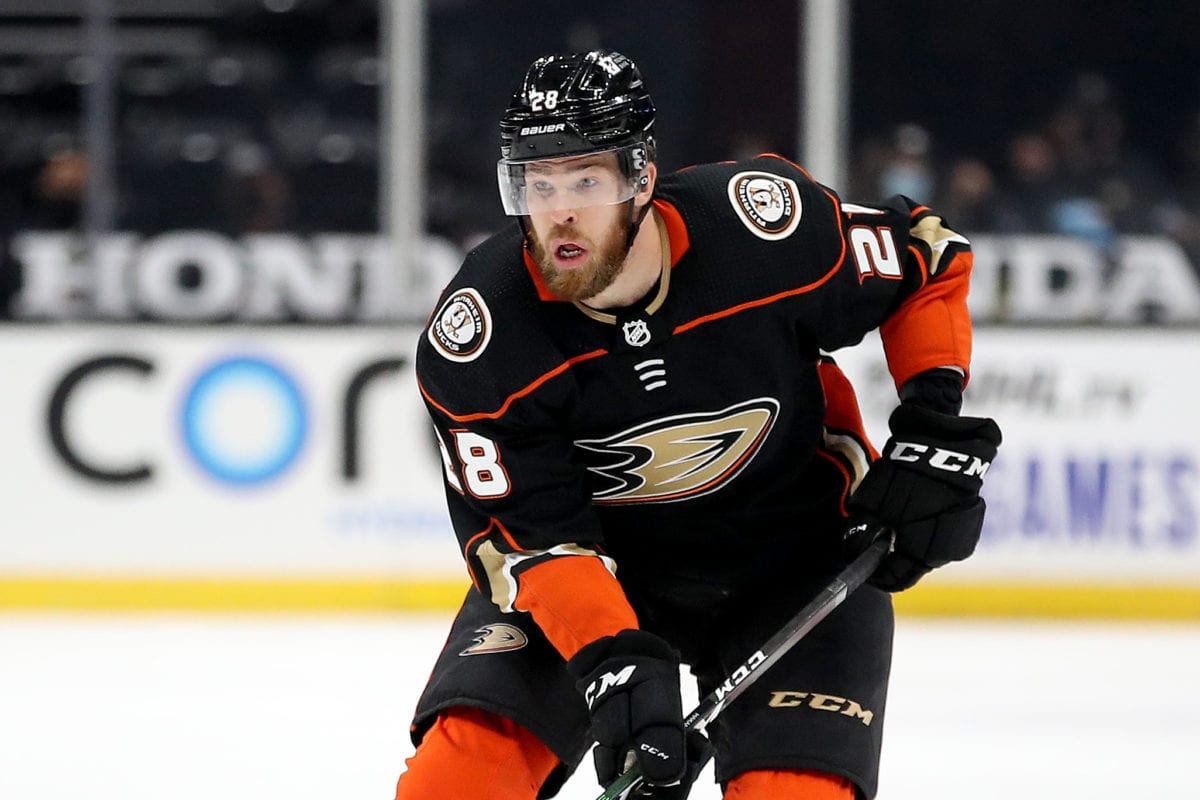In the aftermath of their 5-4 overtime loss to the Nashville Predators, the Colorado Avalanche received negative but familiar news about rookie defenseman Bowen Byram. The young blueliner was stepping away from the team for personal reasons, later revealed to be related to lingering concussion problems stemming from a series of hits suffered over the course of the past few seasons.
It’s another unfortunate twist in Byram’s short NHL career, made crueler given how well he had been playing to this point. The 2019 fourth-overall pick has scored 11 points in 18 games this season while playing over 19 minutes a night, fourth among Avalanche defensemen. Colorado is set at the top of their blue line rotation, with Cale Makar, Devon Toews, and Samuel Girard headlining the talented troupe.
However, the depth options haven’t been as strong as anticipated, and the team needs greater depth if it hopes to withstand the grind of what is expected to be a lengthy Stanley Cup run. Now, Byram could return quickly, but given the seriousness of concussions, it’s safe to assume he might take longer to recover.
Luckily, the NHL’s playoff race has begun to shake out, and several teams look ripe for the picking, with a draft pick or two the likely acquisition cost for the cheaper options out there. With that, here are three affordable trade targets for the Avalanche to replace the absent Byram.
Brett Kulak, Montreal Canadiens
The first target on this list is Brett Kulak of the Montreal Canadiens, an unassuming defender who plays an effectively simple style, the perfect complement to the rest of Colorado’s dynamic blue line. While not an offensive force by any means, Kulak is a dependable puck mover who shifts the play towards his opponent’s net. His calm demeanor and keen on-ice awareness help him maintain possession of the puck and effectively transition play out of the zone. For what it’s worth, Kulak’s seven points at 5v5 are tied for the team lead among defensemen, and he possesses enough offensive instincts to mesh well with Colorado’s skilled forwards.
Related: Avalanche’s Toews Emerging as Dark-Horse Norris Trophy Candidate
Prior to this cursed season for the Canadiens, Kulak graded out as a force at even-strength. He posted four consecutive seasons where his team controlled a minimum of 52% of scoring chances (CF%) and expected goals (xGF%) at 5v5. His season is a bit of a mirage (47% xGF), but it represents one of the better marks on a forlorn Montreal blue line. He’s also been hampered by skating alongside David Savard, Montreal’s worst defenseman, by relative expected goals share (difference between xGF% when on and off the ice).

He doesn’t get caught out of position often either, as his +1 penalty differential (seven drawn, six taken) is the only positive ratio among Montreal’s defensemen. He might not be fleet of foot, but he maintains strong defensive positioning, also tying for the positional lead in takeaways (seven) at 5v5.
Kulak also boasts penalty-kill experience (0:48 a game this season), even if Montreal’s results when down a man have been uninspiring, to say the least (72.8% efficiency). In any case, Kulak is versatile enough for head coach Jared Bednar to feel comfortable deploying him in most situations and knowing he isn’t going to make mistakes. They could do worse for depth defensemen.
Mark Pysyk, Buffalo Sabres
When looking for relief at the bottom of the lineup, teams often prioritize the ability to essentially kill time while the stars rest up for their next shift. In that case, the Avalanche should turn their attention towards Mark Pysyk of the Buffalo Sabres. He’s got some size on him at 6-foot-1 and is an effective transition player who could complement Colorado’s high-flying attack.
Related: Avalanche Have 3 Good Goalies to Target for a Deep Playoff Run
Like Kulak, Pysyk has seen his box score and advanced numbers take a hit due to playing for a bad team, but his relative numbers suggest that he’s been the lone bright spot for the Sabres’ blue line. According to MoneyPuck, Pysyk has the best relative expected goals numbers on the Sabres at 5v5, with the team accruing 2% more of the xGF share when he takes the ice compared to when he sits. It may not seem like much, but he’s accomplishing this on a rebuilding Buffalo squad less concerned with winning this season (or any other season for that matter).

Apart from Rasmus Dahlin, no other Sabres defender has played more cumulative minutes than Pysyk, with his 19:12 minutes of average ice time the second-highest deployment of his career. Further, his seven points in 35 games sit third among Sabres’ defensemen in scoring, but he’s done it while being given virtually no power-play time.
Pysyk is also a dependable option on the penalty kill, having played at least one minute a game while shorthanded in six of his 10 NHL seasons. He’s playing just under two-and-a-half this year, the second-most on the Sabres behind Robert Hagg. Buffalo is killing just over 79% of their penalties this season, ranking 19th in total efficiency.
At this point, Colorado is hoping for a stopgap who can help stem the bleeding on the penalty kill while contributing to strong possession play. Pysyk checks the list on both fronts and Buffalo likely parts with him for very little. Not to mention he can cycle in with the forwards in a pinch. Hit the phones, Joe!
Jani Hakanpää, Dallas Stars
Jani Hakanpaa is the least attainable of the three trade targets at this point in time, with the Dallas Stars still in the mix for one of the Western Conference’s two wildcard spots. They only trail the San Jose Sharks by three points and eclipse them in points percentage, but the Flames stand in between them and the postseason by one point.
Even still, Hakanpaa could represent the option with the highest upside given his prowess as a defensive specialist. In terms of 5v5 play, he ranks very highly in per-60 rates of scoring chances allowed (26th in SCA/60), expected goals against (12th in xGA/60), and high-danger chances conceded (19th in HDCA/60). Additionally, of the Stars’ defensive pairs to have played at least 50 5v5 minutes together, Hakanpaa appears on three out of the top five by expected goals against per-60.

The former member of the Anaheim Ducks and Carolina Hurricanes is a frequent sight on the penalty kill, playing at least a minute per night throughout his NHL career. In 2021-22, he’s head coach Rick Bowness’ second-favorite option behind Esa Lindell, demonstrating his influence on Dallas’ defensive schemes.
As I mentioned, his hulking physical presence (6-foot-5) and identity as a defensive stopper make him more valuable to the Avalanche than to most teams. Their other defenders excel at the offensive side of the puck but can get brushed off on occasion. Hakanpaa is an affordable solution to that problem and could form one-half of a duo offering the best of both worlds, such as slotting in next to Girard or even Byram once he returns. As a result, I’d prioritize Hakanpaa in any trade talks, easier said than done.
Avalanche Can Weather the Loss of Byram, for Now
For the Avalanche, this season’s focus is entirely on the playoffs, and what happens in January might not matter so much in the grand scheme of things. s I mentioned earlier, owning a stable of dependable if unremarkable defensemen is a factor in weathering the adversity of the postseason. If Colorado is to get by without their burgeoning blue line star, they must add to their group on the back end. They’ve got the stars to make the difference, now they should turn their attention towards the supporting cast. Each of those three names expires after this season, carries a minuscule cap hit, and shouldn’t represent an abnormally high acquisition cost. General manager Joe Sakic could have bigger things on his mind, but this is an issue that shouldn’t go unaddressed.
Data courtesy of Evolving Hockey, MoneyPuck, Natural Stat Trick, and the NHL.